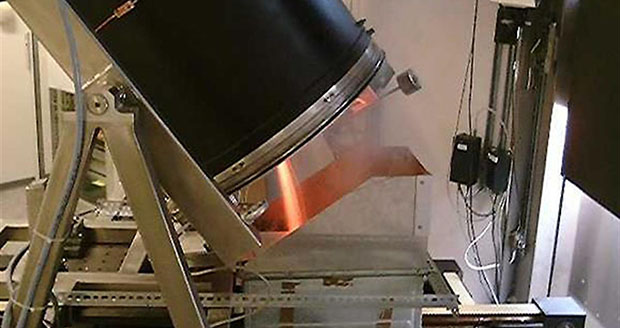Saturday, 03/01/2026 | 00:06 GMT+7
As South Africa is among the world's 15 largest producers of greenhouse gases, with metalworking industries accounting for approximately 30% of manufacturing in the country, using this solar method to melt metals could substantially reduce carbon dioxide emissions, energy costs and demand on the strained generation system.
Collaboration across sectors
Scientific institutions and companies from South Africa and Germany are collaborating on the project, which is coordinated by the German Aerospace Centre - Deutsches Zentrum für Luft-und Raumfahrt (DLR).
Working alongside the DLR’s Institute of Solar Research , the Aachen-based company AixProcess GmbH is contributing its expertise to simulate a suitable system. The project partners in South Africa are the Council for Scientific and Industrial Research (CSIR) and the National Foundry Technology Network (NFTN), the state-owned utility, Eskom, and the Department of Science and Technology (DST). The German Federal Ministry of Education and Research -Bundesministerium für Bildung und Forschung (BMBF) is funding the project for three years, from April 2015 to March 2018.
Mirrors to concentrate solar energy
Initially, the project partners will develop a 'rotary solar kiln', used to melt and recycle aluminium. The rotary kiln is similar to the elongated drum of a washing machine, rotating at low speed. Effectively, this rotational movement constantly mixes the aluminium deposited in the drum, and therefore ensures an even distribution of heat.

The researchers will use solar mirrors to focus the sun's radiation and achieve the necessary temperatures of approximately 700 degrees Celsius. The system developed within the project will undergo testing on the solar tower at the DLR Institute of Solar Research in Jülich from 2017 onwards. This facility has over 2,000 mirrors designed to concentrate solar radiation on a point situated 60 metres up, at the top of the tower.
Logistics concept and business plan
In addition to the system, the project partners will prepare a logistics concept, detailing how the molten aluminium can be transported from the central solar melting plant to the production facilities that will process the liquid metal. The findings from the demonstration phase will also be used to produce a business plan for a commercial pilot system.
Project manager Martina Neises-von Puttkamer explains: "The aim of the project is to develop an energy and cost efficient method that can be implemented across a variety of system sizes, depending on the requirements.”
Initial tests at the DLR solar furnace in Cologne
A number of tests will involve melting small batches of aluminium scrap, and then analysing the quality of the molten aluminium. Then, AixProcess will use its expertise in process and flow simulation to model the reactor and the process itself.
The researchers will take the calculations from the simulation to optimise the reactor, enlarging its scale to a size suitable for use in industrial processing. The full-scale numerical models will also form the basis for technological and economic assessments of the melting process.
Mai Linh








 Webinar 2: “Financial Support for Energy Efficiency Enterprises – Opportunities and Challenges”
Webinar 2: “Financial Support for Energy Efficiency Enterprises – Opportunities and Challenges”
 Vietnamese enterprises achieve green growth and cut costs through energy efficiency
Vietnamese enterprises achieve green growth and cut costs through energy efficiency
 Capacity Building for Program Implementing Entity
Capacity Building for Program Implementing Entity
 Enhance Energy Efficiency Knowledge for Managers of Cement Industrial Enterprises
Enhance Energy Efficiency Knowledge for Managers of Cement Industrial Enterprises
 Capacity building for participating financial institutions in Ho Chi Minh City
Capacity building for participating financial institutions in Ho Chi Minh City
 Strengthening capacity for energy management officers of local government agencies
Strengthening capacity for energy management officers of local government agencies
 Steel Enterprises Saving Energy and Enhancing Competitiveness
Steel Enterprises Saving Energy and Enhancing Competitiveness